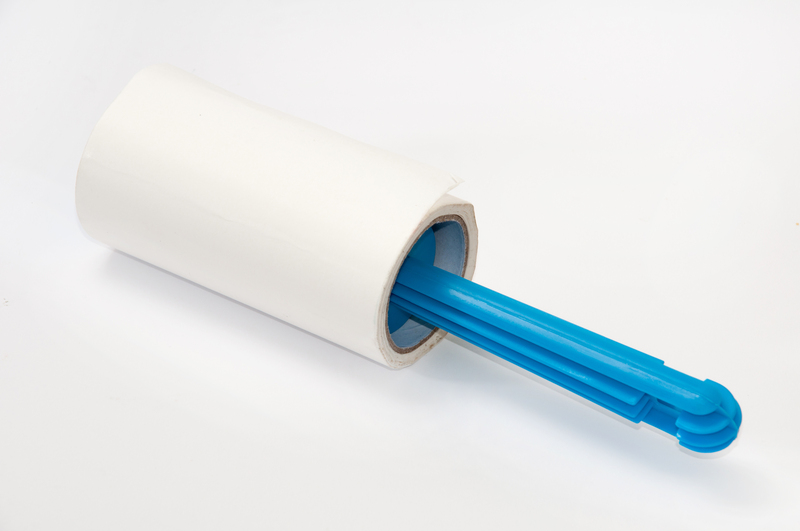Discover the Best Techniques for Perfectly Clean Curtains
Posted on 26/08/2025
Discover the Best Techniques for Perfectly Clean Curtains
Curtains lend an elegant touch to any room, but over time, they can accumulate dust, dirt, stains, and odors. If you're striving for a fresh and welcoming home environment, keeping your curtains impeccably clean is essential. Whether you have heavy drapes, sheer panels, or specialty window treatments, the right cleaning methods will prolong their life and enhance your home's aesthetic. In this comprehensive guide, we'll walk you through the best curtain cleaning techniques to ensure your window coverings look and smell their best.
Why Cleaning Curtains is Important
Curtains serve not only as decorative elements but also as filters, capturing airborne dust and allergens. Regular cleaning can:
- Improve indoor air quality by removing allergens and dust.
- Enhance the appearance of your room by keeping curtains looking fresh and vibrant.
- Help extend the lifespan of your fabric by preventing staining and wear.
- Eliminate odors that may be trapped in the fabric.

How Often Should You Clean Your Curtains?
Many homeowners overlook curtain maintenance, believing it to be necessary only during annual spring cleaning. However, for perfectly clean curtains, experts recommend:
- Light, sheer curtains: Clean every 3-6 months.
- Heavier drapes: Clean every 6-12 months.
- Homes with smokers or pets: Increase cleaning frequency due to extra odors and dander.
- High-traffic areas: Consider more frequent cleaning if curtains are near busy doors or windows.
Different Types of Curtains and Their Cleaning Needs
Not all curtains are created equal. Their fabrics and constructions determine the best cleaning methods. Here are the most common types:
- Cotton curtains: Generally machine washable unless they have linings.
- Velvet or silk drapes: Typically require dry cleaning due to their delicate fibers.
- Sheer fabrics: Best handled with gentle washing or vacuuming due to their fragility.
- Blackout curtains: Often need spot cleaning or vacuuming as machine washing may damage the lining.
- Polyester or synthetic curtains: Usually safe with regular machine washing and drying.
Pre-Cleaning Preparation: Essential Steps
- Read the Care Label: The manufacturer's instructions should guide your cleaning method - whether machine wash, hand wash, or dry clean only.
- Remove Hardware: Carefully take down all hooks, rings, and curtain rods to prevent snagging or rust streaks during cleaning.
- Shake Off Dust: Take the curtains outside and shake gently to remove loose dust and debris. This step prevents dirt from turning into muddy stains when washing.
The Best Techniques for Perfectly Clean Curtains
1. Vacuum Cleaning for Regular Maintenance
For weekly or biweekly upkeep, vacuuming your curtains is a highly effective and simple method. It helps prevent dust buildup without removing the curtains from their rods. Follow these steps:
- Attach the soft brush or upholstery nozzle to your vacuum.
- Start from the top and move in vertical strokes down the length of the curtain.
- Pay extra attention to hems and pleats where dust accumulates.
- For delicate fabrics, use a lower suction setting or place a nylon stocking over the nozzle for added gentle protection.
2. Machine Washing: When and How to Use It
Machine washing is often the preferred method for cotton, polyester, and other sturdy curtain types. To achieve immaculate curtains using a washing machine, follow these guidelines:
- Check the label: Ensure your curtains are labeled as machine-washable.
- Remove hooks/rings: This will prevent damage during the wash cycle.
- Use gentle detergent: Harsh chemicals can weaken fibers and cause fading.
- Choose cold water: Hot water can cause shrinking and color loss.
- Select a gentle cycle: This minimizes mechanical stress on the fabric.
- Air-dry whenever possible: Hang curtains while slightly damp to prevent wrinkles and maintenance of shape.
3. Hand Washing Delicate Curtains
Some curtains, especially delicate or lined drapes, require extra care. For hand washing:
- Fill a clean tub or basin with lukewarm water and a mild detergent.
- Submerge the curtains and gently swish them around.
- Pay special attention to stained or soiled areas - gently rub these with your fingers, never wring or twist.
- Rinse thoroughly with cool water to remove all soap residue.
- Press out excess water by rolling the fabric in a towel. Hang to air dry.
4. Spot Cleaning and Stain Removal
Accidental stains can mar the beauty of your curtains. For spot cleaning:
- Identify the stain's nature (food, ink, grease, etc.) and act promptly.
- Blot, never rub, the stain with a clean, damp cloth.
- Use mild soap or a specialized fabric stain remover according to product instructions.
- Test cleaners on an inconspicuous area first to ensure no discoloration.
- After blottings, use clean water to rinse away any residue; allow the area to air dry.
5. Steam Cleaning for a Deep, Sanitized Clean
Steam cleaning is one of the most effective techniques for perfectly clean curtains without removing them. This method efficiently kills bacteria, dust mites, and removes odors.
- Use a handheld garment steamer or an upholstery steam cleaner.
- Work from top to bottom, holding the device a few inches from the fabric.
- Don't oversaturate; a light pass is usually sufficient.
- Open windows or use fans after steaming to help curtains dry thoroughly and prevent mold growth.
6. Professional Curtain Cleaning Services
When in doubt, trust the professionals! Specialty or extremely dirty curtains, or those labeled "dry clean only," often require expert handling for the best possible results.
- Drapery cleaning specialists use fabric-safe solvents to remove the toughest dirt and stains.
- This approach is perfect for expensive, antique, or layered window treatments.
- Many companies offer pickup, cleaning, and rehanging services for convenience.
While this is the priciest option, it offers peace of mind and preserves delicate fabrics better than DIY methods.
Drying Curtains: The Right Way
Proper drying techniques are crucial for maintaining your freshly-washed curtains:
- Air-drying: Hang curtains on a laundry line or over a shower rod. Smooth out any wrinkles while damp--the weight of the water will help remove creases naturally.
- Tumble drying: Only if the care label allows! Use a low-heat setting, remove promptly, and hang to finish drying and de-wrinkling.
- Ironing: If needed, iron on the recommended heat setting for the fabric type, preferably while the curtains are still slightly damp. Always iron on the reverse side or use a pressing cloth for extra protection.
- Rehanging: Place clean, dry curtains back on their rods and arrange pleats for a crisp appearance.
Preventing Future Curtain Stains and Odors
Now that your window treatments are spotless, proactive steps can keep them that way:
- Encourage air flow: Ventilate rooms regularly to avoid mustiness and mold buildup.
- Keep windows clean: Dirt from windows can quickly soil curtains.
- Vacuum regularly: A quick weekly vacuum prevents excessive dust and allergen buildup.
- Use tiebacks: They help reduce the frequency of contact with walls and hands, lowering stain risks.
- Apply fabric protectors: Especially on high-traffic or light-colored curtains to help repel dirt and spills.

FAQs About Keeping Curtains Perfectly Clean
- Can I wash blackout curtains?
Some blackout curtains can be hand-washed or gently machine-washed, but the backing may be sensitive to water or detergents. Always check the care label and spot clean if unsure. - How can I remove odors from my curtains?
Lightly mist with a fabric refresher, steam clean, or wash as recommended. Outdoor airing on a sunny day also helps refresh the fabric. - Can dry-clean-only curtains be cleaned at home?
It's risky; water or home methods can damage or shrink fabrics. For expensive or irreplaceable curtains, professional cleaning is best. - What's the fastest way to clean curtains?
Vacuuming or steam cleaning can be done while curtains are hanging, offering a quick solution for in-between deep cleans. - Should I iron curtains?
Ironing is fine if recommended by the care label. Hanging damp curtains can also release wrinkles naturally.
Conclusion: Achieving Spotless Curtains Made Simple
Curtains transform a space--but only if they are clean and well-cared for. By mastering these best techniques for perfectly clean curtains, you'll maintain your window treatments' beauty, freshness, and longevity. Whether you're machine washing robust drapes, hand washing delicate sheers, vacuuming for a quick refresh, or investing in professional services, the key is consistency and attention to fabric care instructions.
Give your curtains the attention they deserve, and enjoy a brighter, healthier, and more beautiful home. For more in-depth guides on household cleaning and decor, stay tuned to our site!





